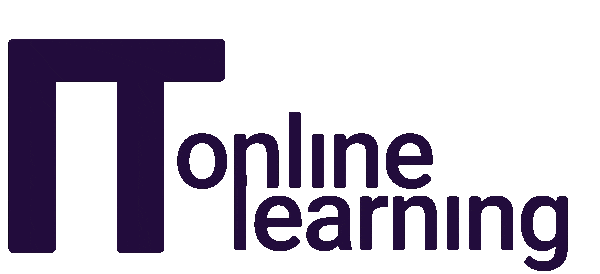Agile methodologies have drastically changed the way projects are managed and executed.
They offer a more flexible and iterative approach, focusing on collaboration and customer satisfaction.
Whether you are new to project management or looking to enhance your existing skills, understanding Agile foundations and earning practitioner certifications can set you apart in the dynamic field of project management.
This article aims to guide you through the essentials of Agile Foundation and Practitioner Certifications and courses, sharing useful insights into how these programmes work and the value they can bring to your career.
In this article, you will learn:
Agile Methodology in Project Management: Explained Simply and Quickly
The Agile methodology is an iterative and flexible approach to project management.
It breaks down projects into smaller chunks, allowing for continuous feedback, adaptation, and delivery of working features quickly.
Teams collaborate closely, prioritise flexibility, and focus on delivering value early and often.
AgilePM® Foundation Certification: Your First Step
The Agile Foundation Certification serves as the entry point for professionals seeking to understand the core principles of Agile methodologies.
This certification provides a comprehensive overview of key Agile concepts, including Scrum, Kanban, and Lean.
It’s designed for individuals with little to no prior experience in Agile practices, offering a solid foundation upon which to build further expertise.
Topics covered in the certification include
The background section would provide historical context and explain how DSDM (Dynamic Systems Development Method) came to be, what problems it aims to solve, and how it differs from other Agile approaches.
Delve into the underlying philosophy and principles of DSDM, such as its focus on delivering business value and the importance of flexibility. This topic also explains the key project variables that DSDM addresses, such as time, cost, and quality.
This topic covers key factors that contribute to the success of a DSDM project, such as effective communication, strong leadership, and a clear understanding of project goals.
This topic provides an in-depth overview of the DSDM process, including the various phases of the project life cycle with the key activities that take place during each phase.
Once you have completed this topic, you will be able to explain the various roles and responsibilities within a DSDM project, including the project manager, business analyst, and developer, and how they interact with one another.
Here you will learn about the different products that are produced during a DSDM project, such as the feasibility study, business case, and project plan.
This topic covers key practices used in DSDM projects, such as timeboxing, MoSCoW prioritisation, and prototyping.
How to plan and control a DSDM project, including how to create a project plan, how to manage risks and issues, and how to track progress.
Who Is It For?
- People looking to enter the project management field with a foundational understanding of Agile principles.
- People transitioning from traditional project management to Agile approaches.
- Professionals wanting to enhance their project management skills with an Agile framework.
- People wanting a basic understanding of Agile to collaborate effectively across teams in their companies.
Why Study This Agile Course With ITonlinelearning?
You get more than a certification when you study with us. In addition to helping you become qualified, you have access to the following:
1. Unlimited, 3-month access to the AgilePM® Foundation Course.
2. Official AgilePM® Foundation Exam.
3. The AgilePM® eBook with your course purchase.
4. Certified Tutor to provide assistance with course queries.
5. Access to a full Support Team for assistance with examination, notes, and study queries.
6. Get real-time support for general and course-related queries with our exclusive AgilePM® Tutor Bot, available 24/7 through ITonlinelearning.
7. A professional, Project Management-oriented CV rewrite.
Agile Practitioner Course: Advancing Your Skills
After mastering the basics through the Agile Foundation certification, the next step is the Agile Practitioner course.
This advanced certification delves deeper into applying Agile methodologies in real-world project management scenarios.
It’s aimed at those who have some experience with Agile projects and wish to refine their skills in leading and managing Agile teams effectively.
Topics covered in the certification include:
You will explore the various roles and responsibilities within an AgilePM project, including the project manager, business analyst, and developer, and how they interact with one another. You will also learn how AgilePM differs from traditional project management approaches in terms of roles and responsibilities.
Cover the different phases of an AgilePM project, including initiation, planning, execution, monitoring and controlling, and closure. This topic explains the key activities that take place during each phase and how they are used to manage the project through its life cycle.
Focus on how to effectively use the DSDM (Dynamic Systems Development Method) Agile project management approach within an AgilePM project. It covers the DSDM process, key success factors, and how to tailor the approach to meet the specific needs of a project.
This section covers time management and how to deliver a project on time. It covers the topics of timeboxing, MoSCoW prioritisation, and other AgilePM techniques for managing time effectively.
We will learn about the human side of AgilePM, including how to build and manage effective teams, how to communicate effectively, and how to handle conflicts.
Explain how to gather, document, and manage requirements in an AgilePM project. You will cover the use of user stories as a tool for capturing and prioritising requirements.
Estimate the time and resources needed to complete a project. This is a valuable process that impacts the bottom line.
How to plan and control an AgilePM project from start to finish. Explain how to create a project
plan, how to manage risks and issues, and how to track progress.
Maintain high-quality standards throughout an AgilePM project. This topic covers techniques such as continuous integration and testing, and how to ensure that quality is built into the project from the start.
This chapter covers how to identify, assess, and manage risks in an AgilePM project. It would explain how to create a risk management plan and how to use AgilePM techniques such as timeboxing and MoSCoW prioritisation to mitigate risks.
How to tailor the AgilePM approach to meet the specific needs of a project. It would explain how to adapt the AgilePM methodology to different project types and sizes, and how to handle challenges such as distributed teams and complex requirements.
Who Is It For?
- People who already hold the AgilePM® Foundation certification and want to apply their knowledge practically.
- Professionals working on Agile projects and want to deepen their understanding and effectiveness.
- People working to become Agile project management professionals or take on leading roles in Agile teams.
- People looking to enhance their ability to configure and adapt the AgilePM® framework to different types of projects.
- People Interested in improving their ability to assess and evaluate progress in Agile projects.
- People looking to gain formal recognition of their Agile project management skills through the AgilePM® Practitioner certification.
Why Study This Course With ITonlinelearning?
You get more than a certification when you study with us. In addition to helping you become qualified, you have access to the following:
1. Unlimited, 3-month access to the AgilePM® Foundation Course.
2. Official AgilePM® Foundation Exam.
3. The AgilePM® eBook with your course purchase.
4. Certified Tutor to provide assistance with course queries.
5. Access to a full Support Team for assistance with examination, notes, and study queries.
6. Get real-time support for general and course-related queries with our exclusive AgilePM® Tutor Bot, available 24/7 through ITonlinelearning.
7. A professional, Project Management-oriented CV rewrite.
Related: PRINCE2® Agile vs PRINCE2®: A Comparative Guide
The Five Driving Forces Behind the Demand for Agile Skills
Agile Project Management Courses: What the Research Says
“Demand for Agile skills continues to outpace supply, with 82% of organisations reporting a talent shortage in Agile project management.”
PMI Pulse of the Profession Report 2023
“Individuals with Agile certifications command up to 17% higher salaries compared to those without certifications.”
Global Knowledge IT Skills & Salary Report 2023
“Project managers with Agile certifications earn an average of $11,000 more per year than those without.”
CompTIA IT Salary Report 2023
“Companies are increasingly seeking employees with ‘power skills’ like adaptability, collaboration, and problem-solving, all of which Agile methodologies heavily emphasise.”
The Wall Street Journal, “The Skills Companies Need Most in 2023”
“Acquiring new skills and certifications can significantly boost a woman’s confidence in her abilities and help her overcome imposter syndrome, leading to more career advancement opportunities.”
Harvard Business Review, “The Confidence Gap for Women in Tech”:
You now should have a better understanding and knowledge of AgilePM® courses and certifications. You should know what the AgilePM® Foundation and Practitioner course teaches, and who these project management qualifications are targeted at.





